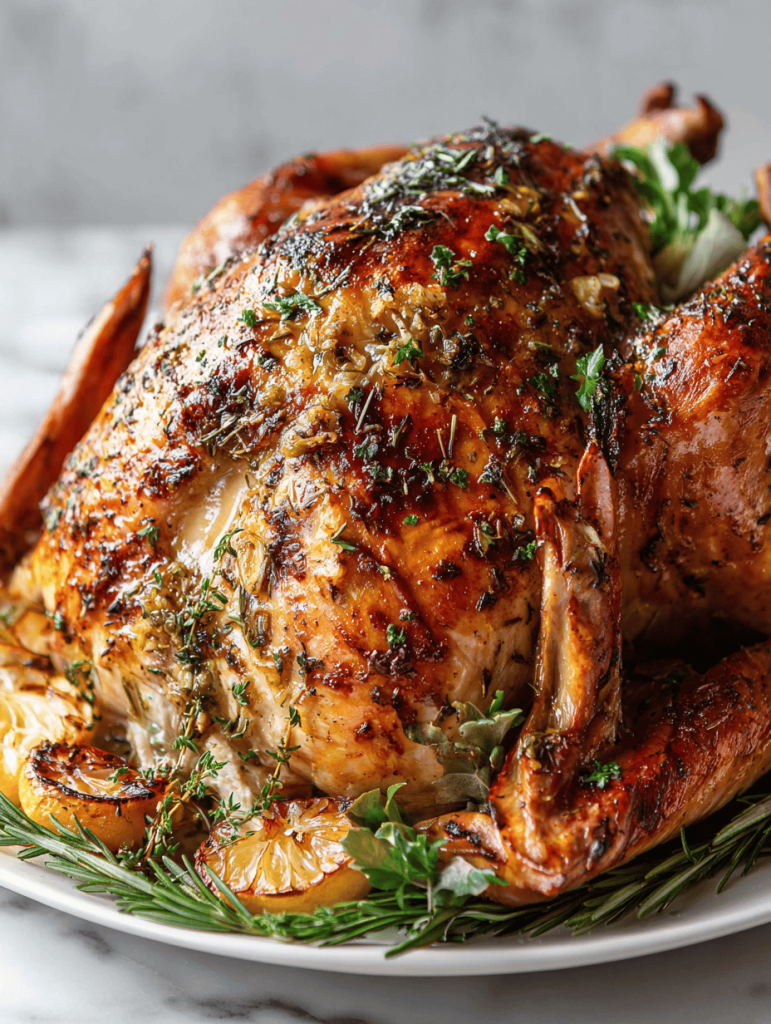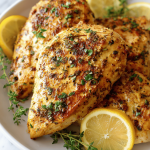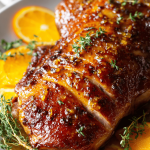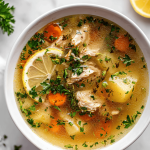Christmas dinner often feels like a test of patience and tradition. I like to twist that pressure into a chance to get creative and keep it real. This recipe balances the familiar with a dash of unexpected flavor, making the whole process more forgiving.
Why this turkey keeps bringing me back
It’s simple, honest, and forgiving. The aroma alone — roasted garlic, thyme, lemon — fills the house with warmth. Plus, the crispy skin and juicy meat remind me that good food doesn’t have to be complicated. It’s the kind of dish that makes me want to start planning next year’s version as I carve.
Breaking down the ingredients that make this dish sing
- Turkey: The star—juicy, tender, with that satisfying crispy skin.
- Lemon: Brightens the aroma, adds a tangy burst and keeps the meat moist.
- Thyme: Herbaceous and earthy, it infuses the bird with a cozy scent.
- Garlic: Smoky and pungent, it’s a staple for flavor depth.
- Butter: Rich and silky, helps achieve that golden, crackly skin.
- Salt & pepper: Fundamental for seasoning—don’t skimp.
- Kitchen twine: Essential for tying the legs and keeping everything in place.
Tools of the trade for a fuss-free feast
- Roasting pan: Holds the bird and collects drippings for gravy.
- Kitchen twine: Secures the legs for even roasting.
- Basting brush: Helps spread butter and juices evenly.
- Meat thermometer: Ensures perfect doneness without guessing.
- Carving knife: Slices the turkey cleanly and safely.
Step-by-step guide to a juicy, crispy Christmas turkey
Step 1: Choose a small, heavy roasting pan to keep the bird snug.
Step 2: Preheat oven to 220°C (430°F). Pat the turkey dry with paper towels.
Step 3: Stuff the cavity with lemon halves, sprigs of thyme, and crushed garlic for aroma.
Step 4: Tie the legs with kitchen twine, then rub the skin with butter and a sprinkle of salt.
Step 5: Roast for 30 minutes to develop a crispy skin, then lower to 180°C (350°F).
Step 6: Baste every 20 minutes with pan juices, and watch for golden, crackling skin.
Step 7: Check the internal temperature after 1.5 hours—aim for 75°C (165°F).
Step 8: Let the turkey rest, tented with foil, for at least 20 minutes before carving.
Cooking checkpoints to keep your holiday stress-free
- Skin should be deep golden and crackling, not burnt.
- Internal temp hits 75°C (165°F)—no pink bits.
- Juices run clear when you pierce the thickest part.
- Meat feels tender yet firm, not mushy or tough.
Common pitfalls and how to dodge them
- Cooking without checking temp.? Use a meat thermometer to avoid overcooking.
- Slicing immediately after roasting.? Rest the turkey to keep juices in.
- Uneven browning or burning.? Adjust oven racks for even heat.
- Neglecting to baste.? Baste regularly for crisp skin.
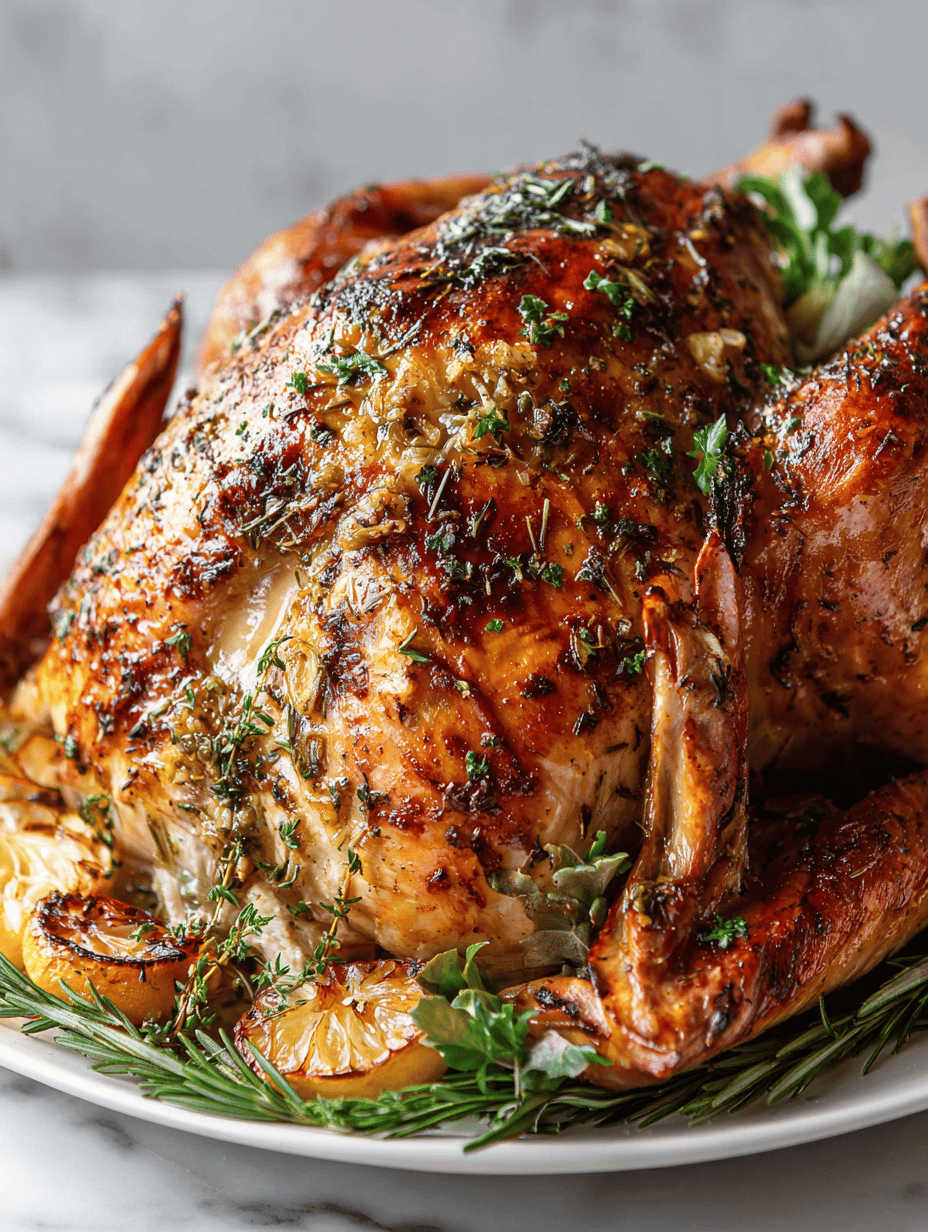
Herb-Infused Roast Turkey with Crispy Skin
Ingredients
Equipment
Method
- Preheat your oven to 220°C (430°F). Pat the turkey dry with paper towels; this helps achieve crispy skin.
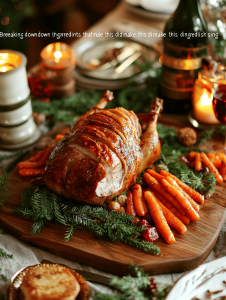
- Stuff the cavity with lemon halves, fresh thyme sprigs, and crushed garlic to infuse aroma and flavor.
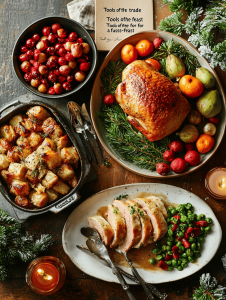
- Use kitchen twine to tie the legs together, keeping everything snug and evenly shaped for roasting.
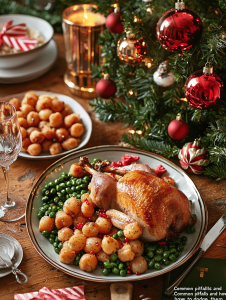
- Rub the entire surface of the turkey with melted butter, then sprinkle generously with salt and pepper for seasoning.
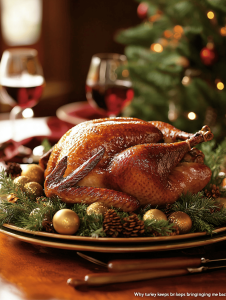
- Place the turkey in a roasting pan and roast for 30 minutes at high heat to develop a golden, crispy skin.
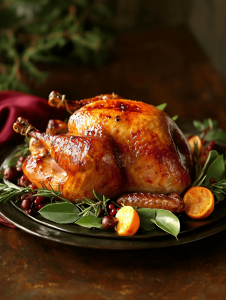
- Lower the oven temperature to 180°C (350°F) and continue roasting, basting every 20 minutes with pan juices to keep the meat moist and skin crisp.
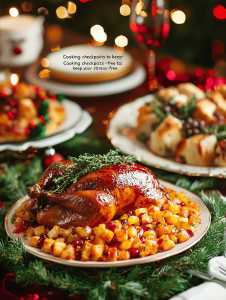
- Check the internal temperature after about 1.5 hours; it should reach 75°C (165°F). The juices should run clear when pierced.
- Once cooked, transfer the turkey to a cutting board, tent loosely with foil, and let it rest for at least 20 minutes to lock in juices.
- Carve the turkey with a sharp carving knife, revealing tender, juicy meat beneath the crispy skin.
- Serve your beautifully roasted turkey, enjoying the aroma of garlic, lemon, and thyme with every bite.
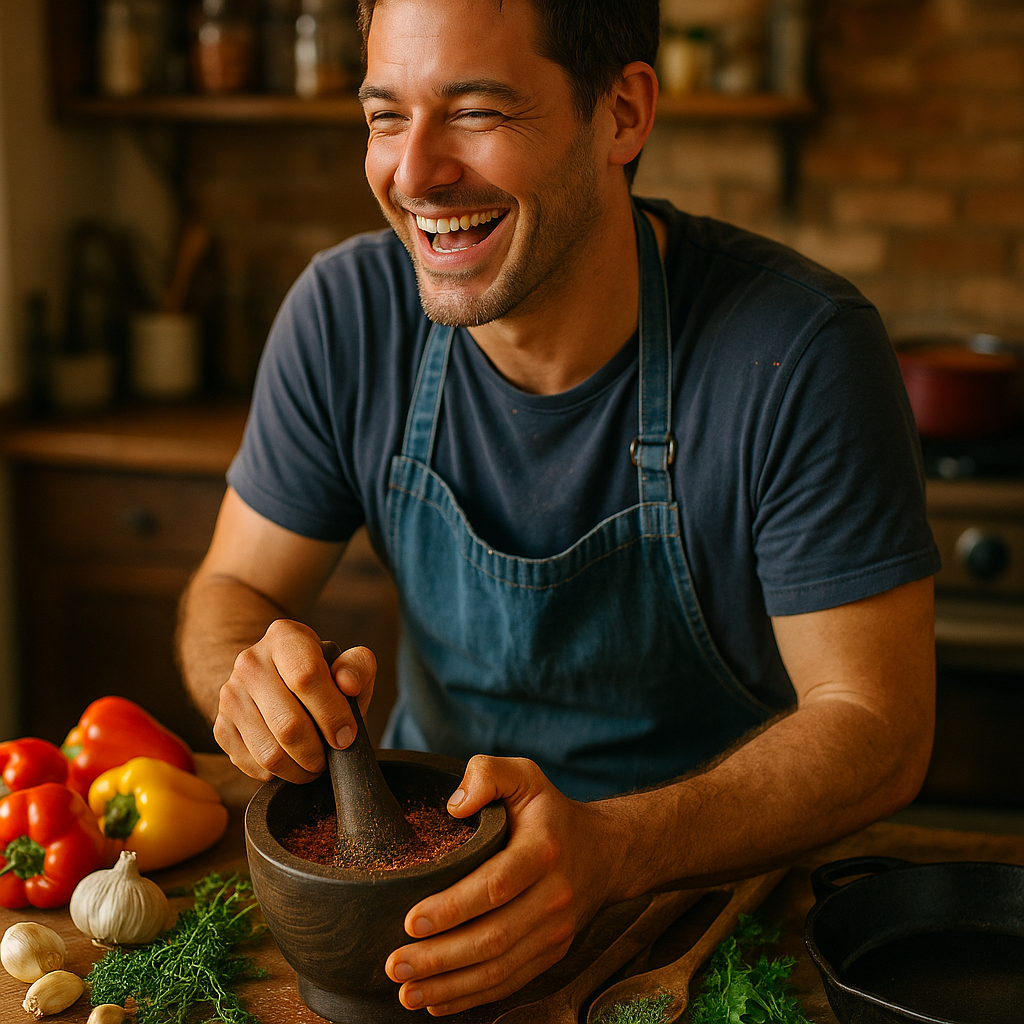
Hi, I’m Theo Granger, a former line cook and unapologetic flavor maximalist from New Orleans. I believe there are two types of people in this world: those who season their food, and those who LIVE to season their food. This blog is for the latter.
